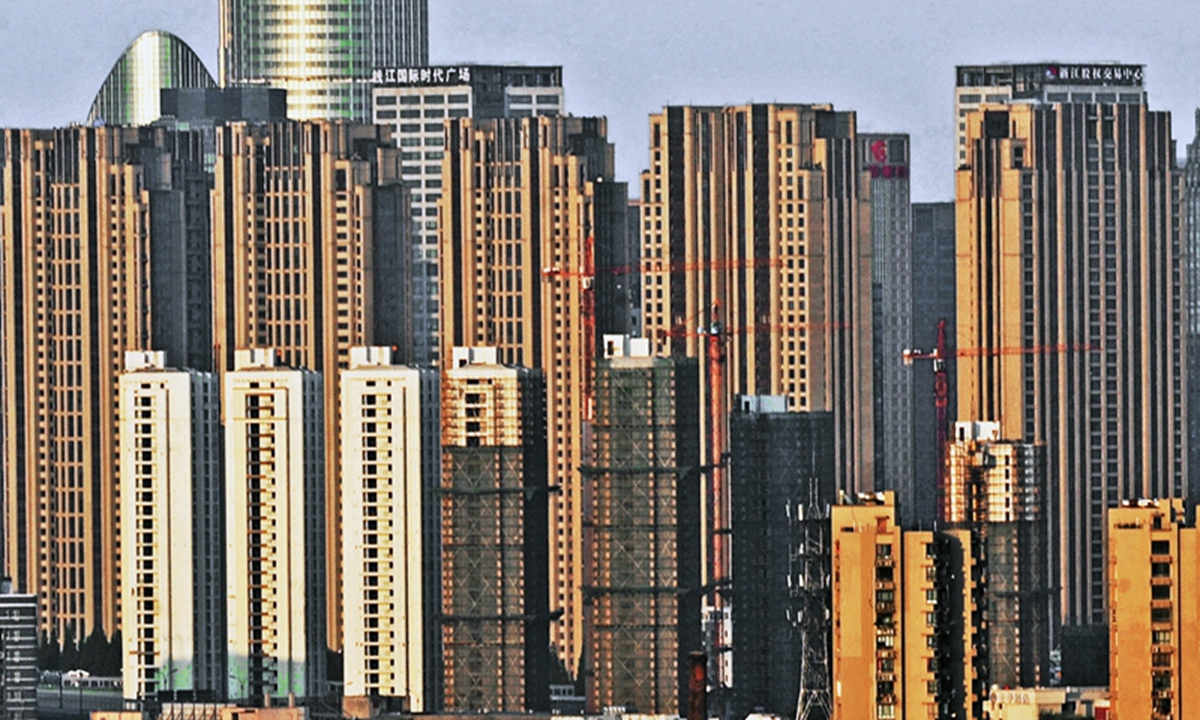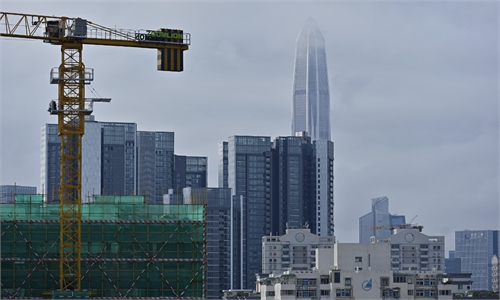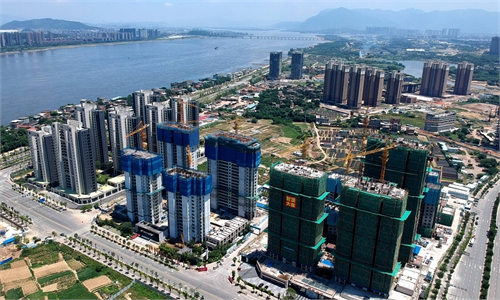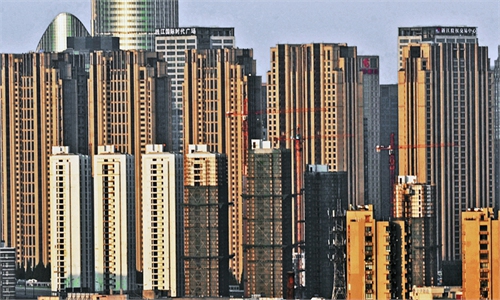
Photo: Xinhua
An opinion piece published by the Financial Times on Sunday said that "China may be on track for a new wave of Japanification," citing a report from Citigroup analysts claiming that China today looks "strikingly similar" to Japan in its post property bubble era, and investors should heed the potential risks in the banking system.While it is widely acknowledged that China's economic recovery will be an important driver of the global economy this year, some from the West are still trying to play up the potential long-term risks confronting the Chinese economy by finding fault within its real estate sector. Such attempt actually exposes their ignorance of China's past efforts to deflate bubbles as well as the stabilized trend being seen throughout the Chinese property market. If anything, assessing China's real estate problems cannot be separated from evaluating its urbanization process.
Indeed, there may be some areas of similarity between Japan in its property bubble era and the current Chinese property market, such as an aging population and massive bank credit that has supported real estate expansion. But that doesn't necessarily mean China will follow in Japan's footsteps, as the differences between the two are more obvious than some superficial similarities.
The Japanese economy bubble occurred in the 1980s and early 1990s when Japan was experiencing an economic boom, which was characterized by asset price bubbles in both housing and stock markets as well as a gradually weakening real economy. Against this backdrop, the Japanese central bank chose to increase interests and tighten regulations, causing the burst of the bubble, which eventually led to an extended period of recession.
In contrast, the current Chinese economy is at a very different stage, with stable economic fundamentals and already an asset price bubble that has largely been managed. Most importantly, since the optimization of China's anti-COVID-19 response at the end of 2022, the Chinese economy has shown growing signs of a strong rebound, including uptick in the property market. After nearly two years of a real estate market slump, there has recently been an apparent pickup in first-tier cities and some second-tier cities, which is the result of rising confidence in China's economic recovery, and which is not driven by bubbles.
China's population is so large that no other country except India can compare with it. This means its urbanization will last for a long time and will be the largest in scale in the world. Those who cannot see this will certainly fail to make a correct judgment of China's real estate industry. In fact, it is not the first time that Western media outlets have tried to undermine China's economy by exploiting its real estate risks. The problem is that their overemphasis on financial difficulties faced by a handful of property developers has become increasingly a distraction preventing them from seeing the whole picture as to what has really happened in China's real estate market.
The fact that Chinese authorities announced in late November the relaxing of restrictions on borrowing for property developers by dialing back the "three red lines" policy, which was implemented in August 2020 to tackle unchecked debt by placing an annual cap on new borrowing, is an indication that Chinese regulators believe that there is no possibility of deteriorating debt risk in the real estate sector in the short term.
With the property industry reconfirmed as a "pillar" industry of the national economy, the Chinese government's determination to maintain the stability of the real estate sector for the sake of economic momentum cannot be underestimated, which has been fully reflected in recent price movements. For instance, while prices in some big cities remain at relatively high levels, China's property prices on the whole have begun to stabilize.
The stabilization of housing prices is mainly related to China's urbanization process, which has accelerated in the post-epidemic period. At present, in many of China's medium and small cities, infrastructure construction and upgrade has been picking up the pace, an important factor that will contribute to the recovery of China's property sector and the country's economic stability in the future.
China's urbanization rate reached 65.22 percent in 2022, but compared with the around 80 percent urbanization rate in developed countries, there is still room for further development of urbanization in China.
In fact, China's urbanization has reached an important turning point, which means urbanization will be more closely integrated with the overall improvement of urban infrastructure, including education and healthcare, among others. Overall, such improvement will be a major favorable factor in boosting the long-term development of China's real estate sector.



